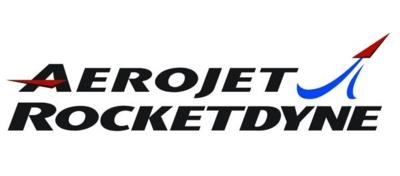Mon, Dec 08, 2014
Large TelComm Satellite Placed Into Orbit
Aerojet Rocketdyne has completed its 100th geosynchronous satellite apogee insertion using its iridium/rhenium High Performance Apogee Thruster (HiPAT), including first and second generation design configurations. The successful insertion was achieved with a large geosynchronous telecommunications satellite, built by commercial satellite manufacturer, SSL, which was recently launched. The milestone will be commemorated by a ceremony at the company's Redmond, Washington facility, with SSL officials in attendance.

The R-4D-15 HiPAT(TM) performs orbit-raising maneuvers for many of the world's communication satellite platforms. Variants of the R-4D have played critical roles in NASA missions such as Cassini's exploration of Saturn and its moons; as well as the European Space Agency and the Japan Aerospace Exploration Agency International Space Station re-supply vehicles.
"The model R-4D-15 HiPAT(TM) is the highest-performing rocket engine in its class," said Warren Yasuhara, vice president of Space Systems at Aerojet Rocketdyne. "By offering a higher specific impulse than
comparable engines, the HiPAT(TM) reduces the total amount of fuel required for the mission and allows spacecraft operators to trade propellant mass for high-value payload."
The R-4D product line includes a series of liquid bipropellant engines that use the propellant combination of nitrogen tetroxide (MON-3) oxidizer and monomethylhydrazine (MMH) fuel. These propellants are storable at room temperature and do not require a separate ignition source, simplifying many higher-level integration issues while still providing high performance.
The R-4D was originally developed as a thruster for the reaction control systems for the Apollo Service Module and the Lunar Excursion Module. The HiPAT is the fifth generation of the R-4D 100 lbf thrust class of liquid bipropellant engines and the second generation of high performance iridium/rhenium engines. "This engine has incredible lineage," said Steve Harper, Bipropellant Propulsion Product Line manager at Aerojet Rocketdyne. "Dating back to Apollo, Aerojet-Rocketdyne's R-4D family of 100 lbf bipropellant engines holds an impressive record of 100 percent mission success throughout five decades of service in space."
More News
Aero Linx: Model Aeronautical Association of Australia MAAA clubs are about fun flying, camaraderie and community. For over 75 years, the MAAA has been Australia’s largest fl>[...]
Touchdown Zone Lighting Two rows of transverse light bars located symmetrically about the runway centerline normally at 100 foot intervals. The basic system extends 3,000 feet alon>[...]
“Discovery and innovation are central to our mission at Virgin Galactic. We’re excited to build on our successful record of facilitating scientific experiments in subor>[...]
How To Get A Story On Aero-TV News/Feature Programming How do I submit a story idea or lead to Aero-TV? If you would like to submit a story idea or lead, please contact Jim Campbel>[...]
Student Pilot Reported That During Rotation, “All Of A Sudden The Back Of The Plane Kicked To The Right..." Analysis: The student pilot reported that during rotation, “>[...]
 ANN's Daily Aero-Linx (05.02.24)
ANN's Daily Aero-Linx (05.02.24) ANN's Daily Aero-Term (05.02.24): Touchdown Zone Lighting
ANN's Daily Aero-Term (05.02.24): Touchdown Zone Lighting Aero-News: Quote of the Day (05.02.24)
Aero-News: Quote of the Day (05.02.24) ANN FAQ: Contributing To Aero-TV
ANN FAQ: Contributing To Aero-TV NTSB Final Report: Cirrus Design Corp SR20
NTSB Final Report: Cirrus Design Corp SR20



